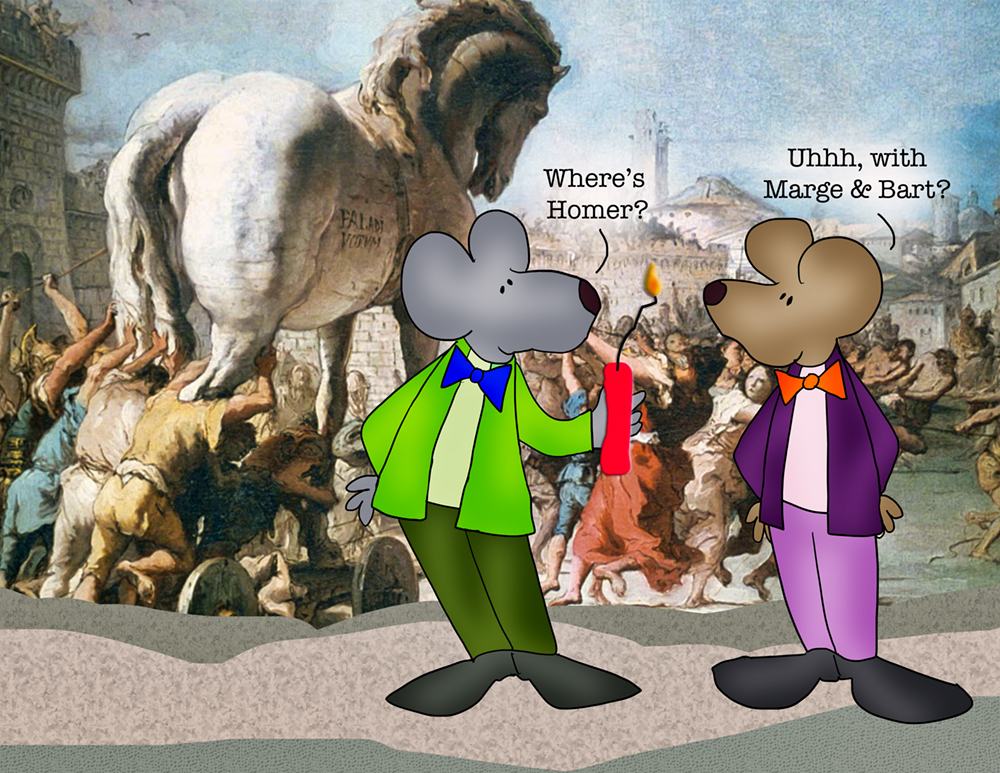
Now here’s a guy. I wasn’t going to write yet another historical bio this morning, just because I’ve been doing them a lot lately. But this guy. Holy Flying Boulders Batman.
The guy is Heinrich Schliemann. He’s a German, sort of, and an Archaeologist, sort of. Which by the way, is a dicey word to spell — Archaeology. You have to line up all those vowels in the right order. They should have called it Digology. Or Scoopology. Something. Archae? Even though it means first, or beginning — they should’ve given it something easier.
Anyway, back to the dude. Heinrich Schliemann. He was born on this date in 1822, and died 68 years later. But he did some things during his time. Where do I even start with this guy?
Birth. He was born into a poor family. His father was a Pastor. To earn money, the little Henry worked in a grocery store, until he burst a blood vessel lifting a heavy barrel. He was 14. He also had a fascination with Homer. Now, not many early teenagers get wrapped up in Homer, but Henry did. A few years later, he moved from his little German village hometown, to Hamburg, and he became a cabin boy on a shipping vessel. Wouldn’t you know, when they set out, that dang boat floundered at sea, and everyone on board was all but lost. Not Henry though. He and some other survivors washed up on shore in the Netherlands. He squeegeed out his clothes, walked up on shore, and eventually became a messenger, office attendant, and later, a bookkeeper in Amsterdam.
From there, the 22-year-old Schliemann took a position with B. H. Schröder & Co., an import/export firm. In 1846, the firm sent him as a General Agent to St. Petersburg. Russia. Not Florida. So, Henry gets to St. Petersburg and learns Greek and Russian. Like that. He came up with his own system for learning languages. He said he could learn ANY language in 6 weeks. By the end of his life, the old boy knew (fluently) English, French, Dutch, Spanish, Portuguese, Swedish, Polish, Italian, Greek, Latin, Russian, Arabic, and Turkish as well as German. Okay. That’s just crazy.
I’ll try to be brief in this part. He represented a lot of companies in Russia, then moved to the U.S., where he started re-selling gold dust in California. He became a U.S. Citizen, and made many claims about his wealth and status that were not true. He said he dined with President Millard Fillmore and his family. Nope. Said he witnessed the great fire of San Francisco of 1851. Nope. All sorts of little / big lies. But, he did make a big load of money. Big load.
He went back to Russia, where he made even more money, when he cornered the Indigo Market. Then he profited heavily on the Crimean War. By the age of 36 he was so wealthy, he could retire. He got married around that time, had a few kids, but the marriage was never good. So he moved to Indianapolis where the divorce laws were quite easy-peasy. He divorced Ekaterina, his wife, then immediately moved to Athens (Greece. Not Ohio.) where he married again a month later.
I’m telling you. This guy. It gets better. Remember, his fascination with Homer? Well, all that time, it did not go away. Heinrich Schliemann was obsessed with the stories of Homer and ancient Mediterranean civilizations. He shifted his focus away from money-making, and decided to dedicate his life’s work to discovering the actual physical remains of the cities of Homer’s epic tales.
He turned his eye toward the prehistorical archaeological sites of the classical world in the 1860s. He was the very first (with a guy named Frank Calvert) to identify the likely site of Troy (Hissarlik) then widely still considered just a myth. Henry’s famous finds include Priam’s Treasure, a cache of gold jewelry discovered in 1873.
But here is the thing. Our boy Henry is criticized today for his archaeological methods. Forget the little digger tools. He used dynamite to excavate. Yes, dynamite. When he located the site of Troy, he blew up and dug hastily through what was probably the actual layers of Homer’s Troy to reach the city’s earliest archaeological layers. Dope. Henry was also the excavator of the bronze age site of Mycenae in North Greece, where he found the so-called “Mask of Agamemnon” in 1876.
Dynamite. What would Indiana Jones think?
Although his legacy in this field is highly problematic, Henry’s findings and publications did a lot, at that time, to popularize, and widen the field of archaeology.
His cause of death was listed as Cholesteatoma. I didn’t know what that was, so I looked it up. I’ll tell you now, too, in case it is unfamiliar in your little bag of medical terms. “A cholesteatoma is an abnormal, noncancerous skin growth that can develop in the middle section of your ear, behind the eardrum. It often develops as a cyst, or sac, that sheds layers of old skin. As these dead skin cells accumulate, the growth can increase in size and destroy the delicate bones of the middle ear. This may affect hearing, balance, and the function of facial muscles.” (Healthline.com)
I’m not sure how this made him die. My guess, it was some evil curse, cast over him by the ghost of Helen, of Troy, for coming in, and blasting the hell out of the place.
And I’ll end this here, because I got too wordy today, all because this guy was such a character. And I didn’t even tell you everything I dug up. In Digology.
=========
“You can find something truly important in an ordinary minute.”
― Mitch Albom, For One More Day
========
“Find your place on the planet. Dig in, and take responsibility from there.”
― Gary Snyder
========
“There is nothing like looking, if you want to find something.”
― J.R.R. Tolkien
=======